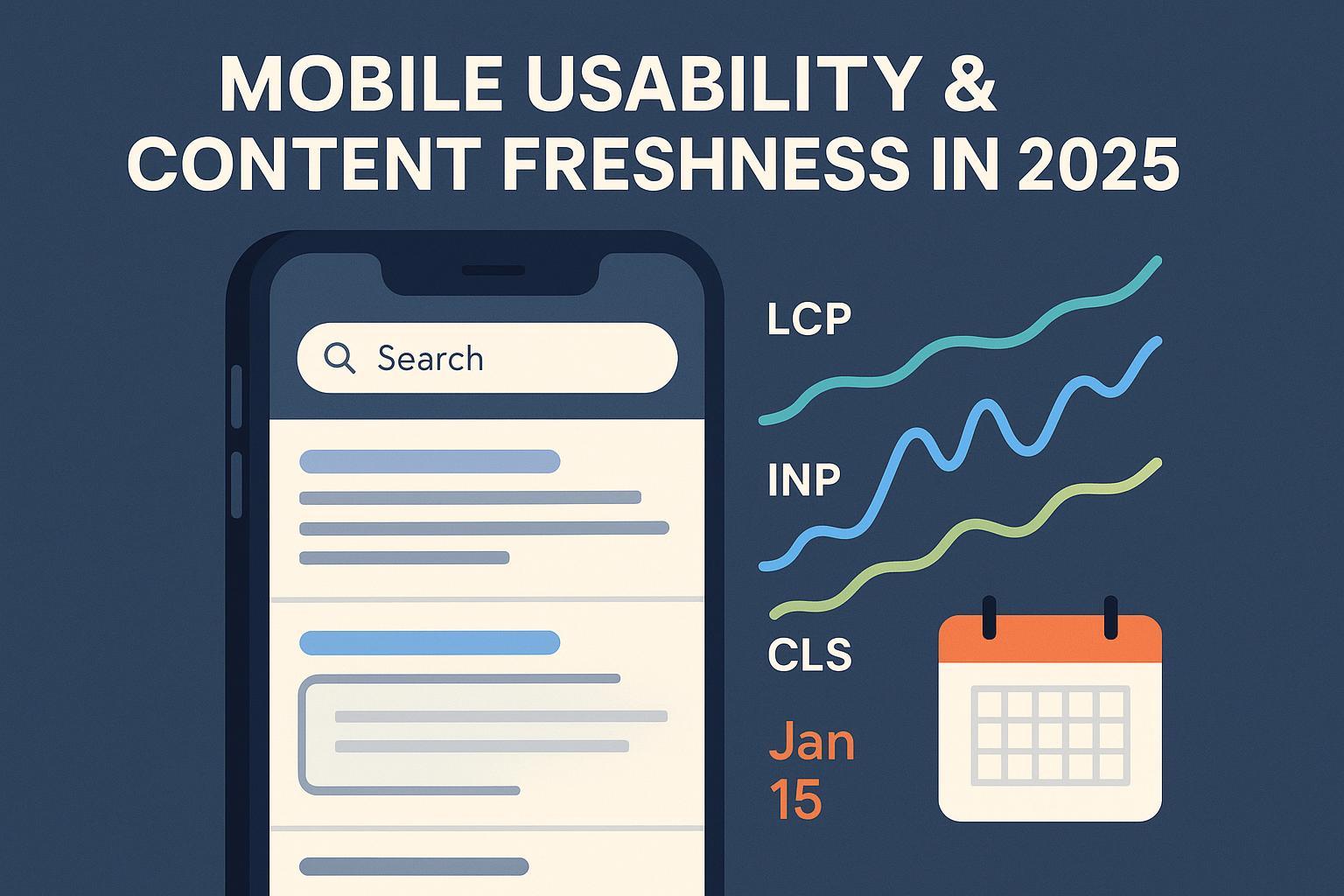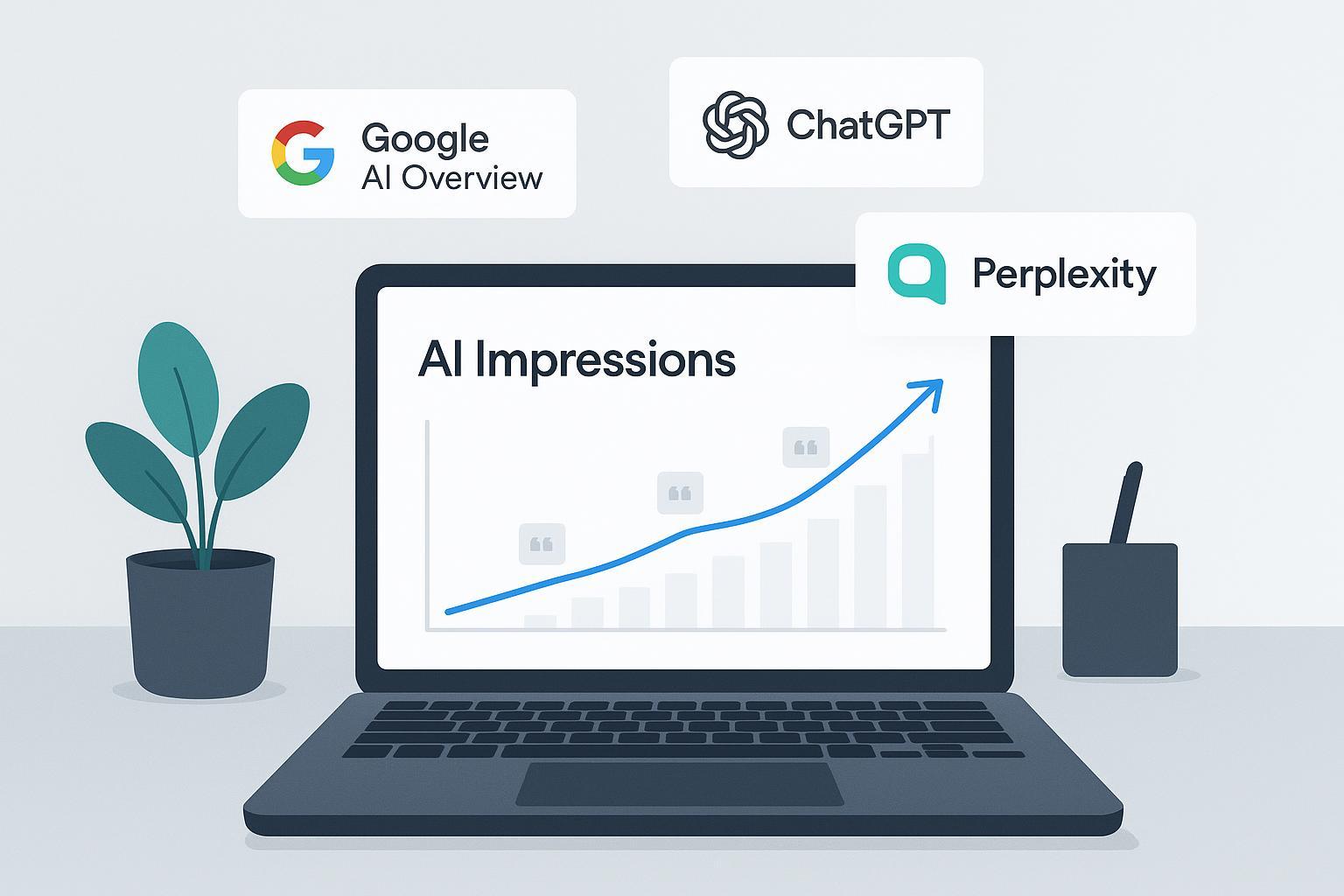Google Algorithm Changes 2025: Freshness & Mobile Usability Ranking Explained
Discover why Google’s 2025 updates make content freshness & mobile usability critical for ranking. See key data & expert tips to boost your SEO now.


Google’s 2024–2025 updates materially changed how sites earn and keep visibility. The March 2024 core update folded the “helpful content” system into core ranking signals and tightened spam policies, while the June 2025 core update refined how relevant, satisfying content is surfaced across queries. Together, these shifts made two practices non‑negotiable for durable rankings: substantive content freshness and strong mobile usability.
What actually changed (and why it matters now)
- In March 2024, Google announced that it integrated helpfulness signals into core ranking systems and expanded spam policies to curb scaled content abuse, site reputation abuse, and expired domain abuse. As Google’s Search Central explains in the announcement, the goal was to show less click‑bait and more helpful content; the rollout completed by April 19, 2024 (Product Blog confirmation). See the official guidance in the Google March 2024 core update & spam policies and the impact note cited in Google’s product blog (2024).
- The June 2025 core update (Search Status Dashboard) started June 30 and completed July 17, 2025, with industry reporting of volatility and recovery patterns. While not a “freshness system,” these updates reward pages that stay helpful and current, and that deliver reliable mobile experiences.
- Page experience continues to matter. Google’s documentation states that page experience signals are used by ranking systems; maintaining good Core Web Vitals is recommended for success. Review Page Experience (Google Search Central) for the stance and components.
Freshness: Substantive updates, not superficial re‑dating
Freshness has never been about changing a date stamp. It’s about keeping content accurate, complete, and aligned with user needs.
- Define “substantive update” criteria:
- Replace outdated statistics and add current data with clear citations and years.
- Introduce new sections addressing emergent queries or product features.
- Refresh examples and case studies to reflect current tooling or regulations.
- Update internal/external links to authoritative, current sources.
- Align structured data timestamps with visible “Updated on” notes.
- Respect date display guidance. Google recommends adding a user‑visible publication or updated date and keeping it consistent with structured data. See byline date best practices (Google, 2024–2025).
- Avoid manipulative “thin updates.” The expanded spam policies aim to reduce scaled, low‑value content production; re‑dating without real improvements erodes trust and is unlikely to help.
Practical freshness workflow
- Prioritize by demand and decay: Target queries with clear recency intent; pages with declining impressions/clicks; topics tied to fast‑changing technologies or rules.
- Decide update scope: Minor corrections vs major revisions with new sections, data, and examples.
- Maintain change logs: Add “Updated on {date}” notes with a brief summary of what changed.
- Measure outcomes: Annotate releases; watch impressions, CTR, and ranking stability; compare performance 14, 30, and 60 days post‑update.
Mobile usability’s ranking footprint in 2025
Google uses the mobile version of your site for indexing and ranking, so parity and performance on mobile are critical.
- Mobile‑first indexing: Ensure parity of primary content, links, and structured data between mobile and desktop. Google clarifies this stance in Mobile‑first indexing best practices.
- Core Web Vitals targets: For most sites, aim for LCP ≤ 2.5s, INP ≤ 200ms, and CLS ≤ 0.1. These thresholds and definitions are documented in Core Web Vitals (Google Search Central).
- Page experience recommendation: Google states its ranking systems use page experience signals and recommends achieving good CWV. See Page Experience.
Mobile parity and performance checklist
- Content parity: The same primary content and headings on mobile and desktop; avoid hidden critical sections on mobile.
- Links and structured data parity: Ensure identical internal links and schema markup.
- Canonical and hreflang: Confirm parity and accessibility from mobile.
- Performance budgets: Cap image weights, limit render‑blocking scripts, use lazy loading for below‑the‑fold assets.
- Monitoring: Use Search Console’s CWV report and CrUX‑backed tools to track field performance over time.
Monitoring and proving impact across Search and AI answers
To validate your freshness and mobile UX work, tie changes to outcomes and watch visibility across both classic search and AI‑driven answer surfaces.
- Search Console: Annotate content refreshes, track impressions and CTR, and review the Core Web Vitals report for improvements.
- CrUX/field data: Use Chrome UX Report visualizations to see historical trends and stability.
- Cross‑channel visibility: Monitor how your brand appears across Google’s AI features, ChatGPT, and Perplexity to catch gaps and opportunities. Geneo can be used to track brand mentions, AI answer citations, and query visibility across these platforms to inform your refresh priorities. Disclosure: Geneo is our product.
30/60/90‑day plan to operationalize freshness + mobile UX
- Days 0–30
- Build a prioritized refresh backlog (recency‑intent pages; declining performance; regulatory/technology shifts).
- Run a mobile parity audit: content, links, schema, canonical/hreflang.
- Establish CWV performance budgets and remediation tickets.
- Days 31–60
- Ship major refreshes with new data, sections, and examples; add “Updated on” notes and align structured data.
- Validate CWV improvements in Search Console; analyze click‑through and impression changes.
- Monitor AI answers visibility and annotate changes.
- Days 61–90
- Iterate based on outcomes: expand to adjacent pages; tighten performance budgets; test UX improvements (navigation, readability).
- Formalize a 90‑day rolling update board and governance cadence.
Outlook: Durable levers amid ongoing updates
Expect continued focus on helpful, satisfying content and stronger enforcement against low‑value, scaled production. Freshness that adds substance, coupled with high‑quality mobile experiences, will remain durable levers through future core updates and AI surfaces. Keep an eye on official guidance like June 2025 core update status (Google) and Page Experience to align your strategy.
Next steps
- Establish your editorial freshness policy with explicit “substantive update” criteria and a change‑log practice.
- Audit mobile parity and enforce performance budgets tied to Core Web Vitals.
- Set up cross‑channel visibility monitoring and integrate findings into your backlog.
- For deeper workflows connecting AI search visibility with editorial and UX operations, explore our insights hub: AI‑driven SEO and monitoring articles.





